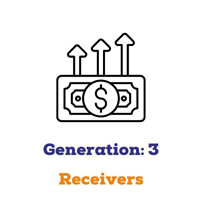The longevity of the family-owned business is critical not only to the owners but also to the economy of their country. Family-run businesses contribute to nearly 70% of the GDP of the country and provide employment to millions. Family businesses must continue for generations, and build a legacy to create wealth for all future generations. But with an increase in family members and business revenues, complexities in the family business also increase. Many family-owned businesses fail to run beyond certain generations. Here, we seek answers to some of these challenges.
The traditional piece of wisdom, "Wealth may pay, but not stay”, transcends generations.
Moreover, there are various sayings across several countries:
“Wealth does not last beyond three generations”
“Shirtsleeves to shirtsleeves in three generations”
“Rice paddies to rice paddies in three generations”
“Clogs to clogs in three generations”
“The father buys, the son builds, the grandchild sells and his son begs”
“Grandfather builds, Father manages, Grandson Sells the business”

Though family businesses are resilient and have staying power, most of them fail to move beyond the third generation.
The outcomes of the generation transition are easy to predict. Each generation has its own peculiarities, understandings, and mindsets.
The founder generation has the ability to work on ideas, understand market gaps, and take extreme risks for their survival and eventually the progress of the family. This generation trusts their own business acumen and dared to be different from the others. Their hard work pays off. Subsequent generations prefer to simply build the business within the framework developed by the first generation.

The second generation inherits the wealth generated by the first generation. They work on the principles laid out by the first generation – focusing on the business goals. The second generation being close to the first believes in simply carrying out the tasks as per instructions received from the first generation. They admire the first generation's talent, hard work, and entrepreneurial drive. They feel the responsibility towards future generations and the fear of losing the family’s patrimony and its possible erosion. Therefore, the second generation works mainly toward wealth protection.

The third generation is vastly different from the first and the second. They neither have the single-minded entrepreneurial spirit of the first generation nor the responsibility of wealth management like the second generation. The third generation fails to recognize the purpose of the business, hard work, tolerance, and sacrifices made to give their generation privileges and social standing. The third generation is a lot more expecting and assumes their rights to these privileges of modern lifestyles without understanding and shouldering the responsibilities.

Several factors that impact the business in the third generation are addressed below
The second generation of business owners may have been successful in building the business and passing it down to the next generation, but they may not have taken the necessary steps to ensure its continued success in the long term.
This includes establishing clear family governance structures, and succession plans, defining roles and responsibilities and providing adequate training and support for the next generation of leaders.
As the business grows and expands, family members may have different opinions, interests, and goals, leading to disputes and disagreements. The family may also struggle to maintain their values and traditions as the business evolves and becomes more complex. The absence of a conflict resolution mechanism can be really challenging.
The third generation may have grown up with the business, but they may not have had the same level of hands-on experience and training as the previous generations.
As a result, they may lack the skills and knowledge needed to successfully lead and manage the business.
Family members may have different ideas about the future direction of the business and who should be in control. This can lead to disagreements and disputes over ownership and control, and make it difficult to make important decisions.
Family businesses may not have adequate support systems in place, such as legal and financial advisors, to help navigate the complex challenges of the third-generation transition.
Family businesses must follow some of the key strategies to avoid falling victim to the third-generation curse.
Family businesses should have a well-defined succession plan outlining each generation's roles and responsibilities. This can help to ensure a smooth transition of leadership and ownership, and reduce the risk of disputes and disagreements among family members.
Family businesses should invest in training and development programs for the next generation of leaders. This can help to build their skills and knowledge, and ensure that they are prepared to lead the business into the future.
Family businesses should encourage open communication and collaboration among all members. This can help to build trust and resolve any conflicts that may arise.
Family businesses should strive to maintain their values and traditions while also embracing innovation and change. This can help to preserve the family's legacy while also allowing the business to grow and evolve. Understand and keep management succession and family ownership succession separate.
Family businesses can benefit from professional family business advisors and family business consultants' expertise. These advisors can provide valuable guidance and support as the business navigates the challenges of the third-generation transition.
In conclusion, the third-generation curse in family businesses is a real and common problem, but it can be mitigated with proper planning and preparation.
By taking the necessary steps to remove this third-generation curse, family businesses can increase their chances of success and ensure their continued growth and prosperity for generations to come.